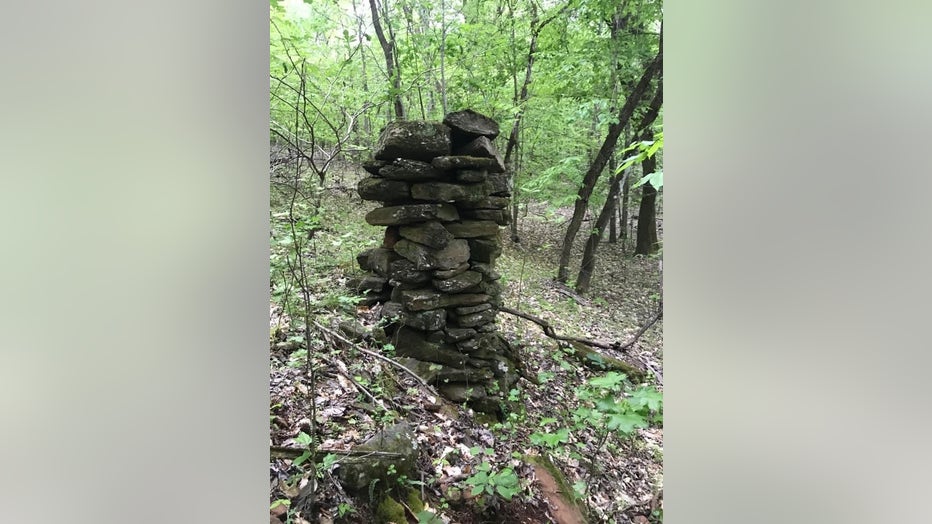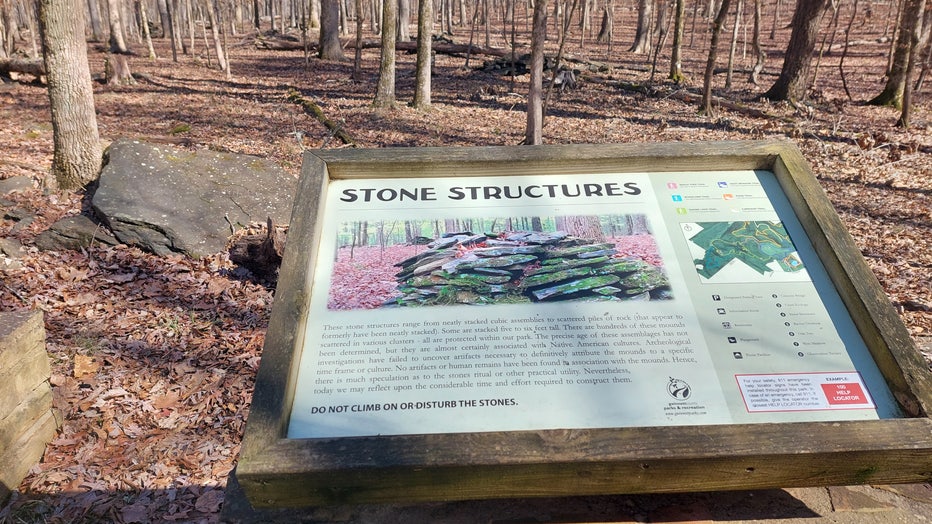Mystery rock mounds leave experts split over proposed Gwinnett neighborhood

I-Team: Mystery rock mounds leave experts split over proposed Gwinnett neighborhood
By Randy Travis Published February 13, 2023 AUBURN, Ga. - More than 30 years after they helped derail a big housing development in Gwinnett County, another mysterious series of rock mounds is again creating controversy. This time also involves a rezoning project in that same area of northeast Gwinnett called Poole Mountain. FULL STORY: https://www.fox5atlanta.com/news/mysterious-rock-mounds-leave-experts-split-over-proposed-gwinnett-neighborhood
AUBURN, Ga. - More than 30 years after they helped derail a big housing development in Gwinnett County, another mysterious series of rock mounds is again creating controversy.
This time also involves a rezoning project in that same area of northeast Gwinnett called Poole Mountain.
Hidden under the tree canopy, dozens of rock piles dot the 519-acre tract. They don’t appear to show a pattern. They don’t seem to have a specific shape.

Rock mounds of various sizes and shapes dot the landscape of a proposed 519-acre development in Gwinnett. (photo by Lindsay Paul)
Questions linger over the origin of these rock structures. What was their purpose? Did Native Americans build them when they lived in this area centuries ago? Or were they left by European immigrants in more recent times with far more mundane reasons?
What is clear is the rock mounds are protected in a Gwinnett County park on one side of Mineral Springs Road while on the other side a similar set waits in the path of developers.
"There’s a lot of history here," said Lindsay Paul, whose home backs up to the proposed development. "We can debate it all day long whether it’s historic, prehistoric, native or not. Clearly this is something that was significant enough, and it’s remained all these years, and it needs to stay here and remain here."

Similar rock mounds are protected from development in Little Mulberry Park, adjacent to Poole Mountain.
In the early 1990s, another developer had big plans for the rollings hills on the west side of Mineral Springs Road. Commissioners even approved the project.
But those rocks turned out to be a formidable foe. Protesters flocked to protect what they called their Native American heritage.
The developer eventually abandoned plans and sold the land to Gwinnett County which, years later, created the 890-acre passive park called Little Mulberry.

Little Mulberry Park was created to protect historic rock formations. It is adjacent to the proposed development where similar rock structures can be found.
No remains or artifacts have ever been found under those mounds, but a marker in the park says the stone structures "are almost certainly associated with Native American cultures."
So how could other rock mounds less than a mile away not also be archeologically significant?

Dr. Jannie Loubser with Lindsay Paul near her home. (photo by Lindsay Paul)
"They’re very similar," said archeologist Dr. Jannie Loubser. "One would think that at least some of them are important and some of them may cover human remains."
But in October, when developer St. Bourke submitted its initial application for rezoning to build 1382 townhouses and single family homes, the paperwork promised there were "no cemeteries or architectural or archeological landmarks on the property."
It's an unambiguous statement that appears still open for debate.
"To say in a map or a statement that there’s nothing is omission or incompetence, I don’t know," said Loubser. "But it’s overlooking important information."
Loubser’s specialty is rock formations. He advised a Jackson County neighborhood on how best to protect a rock mound there, one where human remains actually were found.
But another respected archeologist disagreed with Loubser.

Archeologist Steve Webb believes rock mounds like this on the Poole Mountain site are likely from 19th or 20th Century farmers, not Native Americans.
Steve Webb of R.S. Webb & Associates examined the Poole Mountain rock formations three times for the landowner, the most recent in 2015 for current owner St. Bourke.
He and his team dug around the mounds, studied aerial photographs from the 1930s and reviewed the work of other experts.
Webb said he found no evidence of Native American involvement in the rock mounds. Instead, Webb believes farmers created the piles while clearing the land or to fight soil erosion.
"I am of the opinion that most if not all of the stacked rock features… were likely created by people in the 19th to 20th centuries," he said.
Even more, Webb doesn’t believe the mounds at Little Mulberry Park are Native American-built, either.
"While these are technically historic (I.e. at least 50 years old)," he said in an email to the FOX 5 I-Team, "empirical evidence to date strongly suggests they are not of Native American origin."
Loubser said he can’t imagine farmers trying to grow crops on the side of steep hills.
"That particular area I very much doubt that people did agriculture because of the thin soils," he explained.
Poole Mountain is currently zoned for 1066 homes. There is no hearing scheduled yet for the denser zoning application.
"We look forward to engaging with the community and will continue to work closely with the County and our partners to deliver much-needed housing to Gwinnett," St. Bourke said in a statement.
Meanwhile, some homeowners like Lindsay Paul are already fighting storm water runoff from the Poole Mountain project.
When workers cut a clearing through the woods to get equipment in for soil sampling, water and silt rushed directly toward Paul’s property.
Gwinnett County issued a stop work order and cited the developer.
St. Bourke said it had already addressed the violations. A hearing is scheduled for Feb. 15.
But some parts of history — historic or not — can’t be repaired. In one section of that newly-created clearing you can see a collection of rocks now flattened, with dozens of rock piles waiting in the nearby woods soon to learn their fate.

